Lemon Curd is a traditional breakfast condiment that feels luxurious, but is actually very easy to make. Learn how to make lemon curd, here!

Lemon curd is one of those things that feels like a luxurious treat, but is actually really easy to make.
... when you know what do to, anyway.
I've got a bunch to say on the matter, but don't be intimidated - it literally takes like 10 minutes to get a batch of lemon curd made. You just need the right knowledge, ingredients, and equipment.
Uses for Lemon Curd
Beyond a “just eat it with a spoon, straight from the jar”, there are many, many different uses for lemon curd!
Here are a few ideas for you:
- On the breakfast table. Spread it on toast, Biscuits, scones, etc. Spoon it over waffles or pancakes (especially good when topped with berries!)
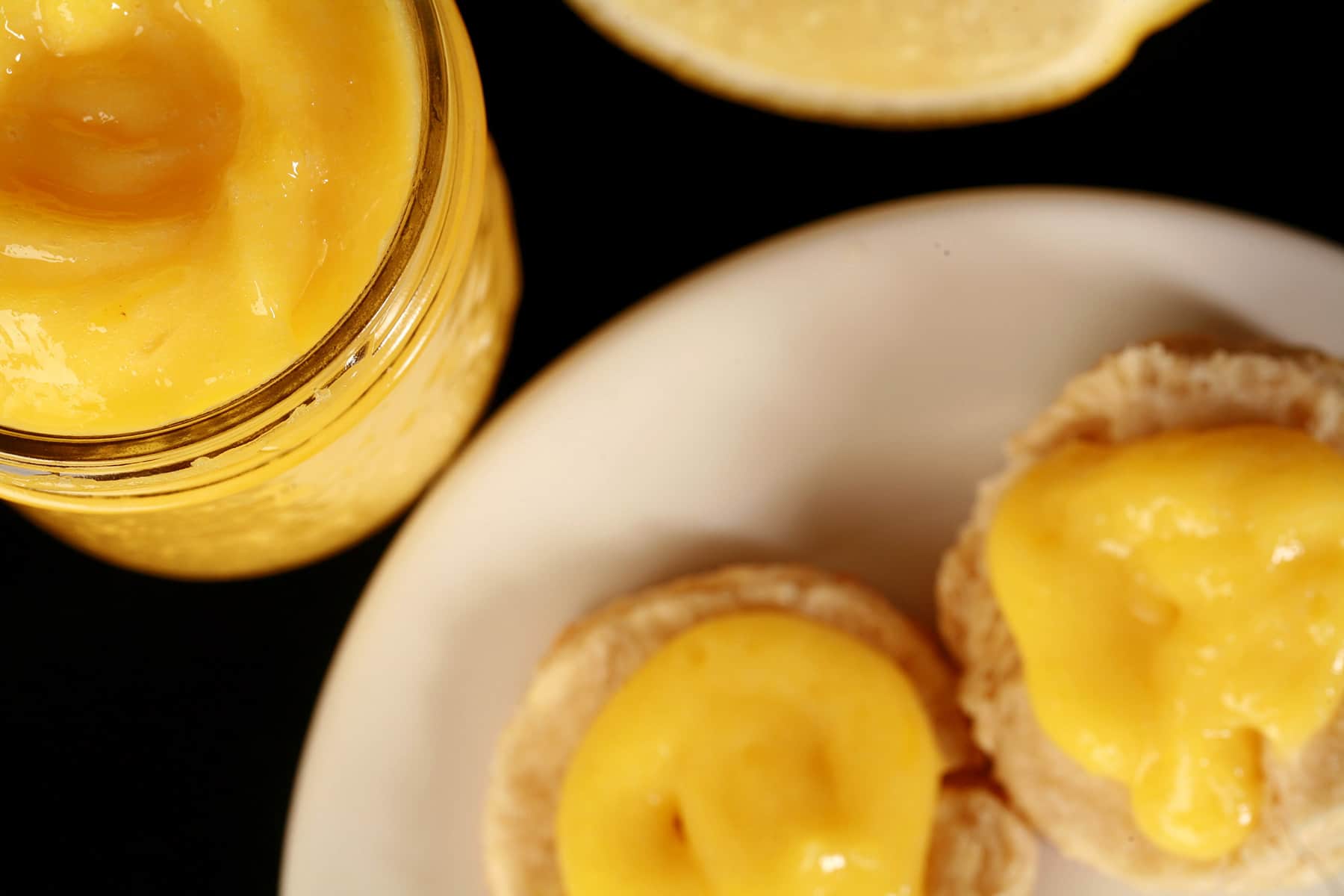
- As a filling for baked goods. Fill Macarons, Cream Puffs or Profiteroles, tart shells, or layered cakes* with lemon curd. I use a sugar free version of this recipe in my Lemon Tart.
- Curd is also a great option for Butterfly Cupcakes, either instead of or in addition to frosting. When “in addition to”, I’ll spoon some curd in the cavity, then pipe frosting over it.
- Use as a topping for Pavlova. I like to do the layer of whipped cream, then the curd, and finally the fruit topping. You can even mix some into the whipped cream to flavour it. Alternately, it’s great as an offering on a Pavlova Dessert Board.
- Spoon it over ice cream, Cheesecake, or crepes.
- We like to drizzle it over yogurt that’s been topped with my Porter’s Yogurt and Ice Cream Topping.
- You can also make layered parfaits with curd and yogurt, or curd and cottage cheese.
* When filling layered cakes with curd, it’s best to pipe a ring of frosting around the outer perimeter of the layer being filled, then fill the inside of that border with the curd.
This gives some stability to the filling layer, and will prevent the curd from oozing out.
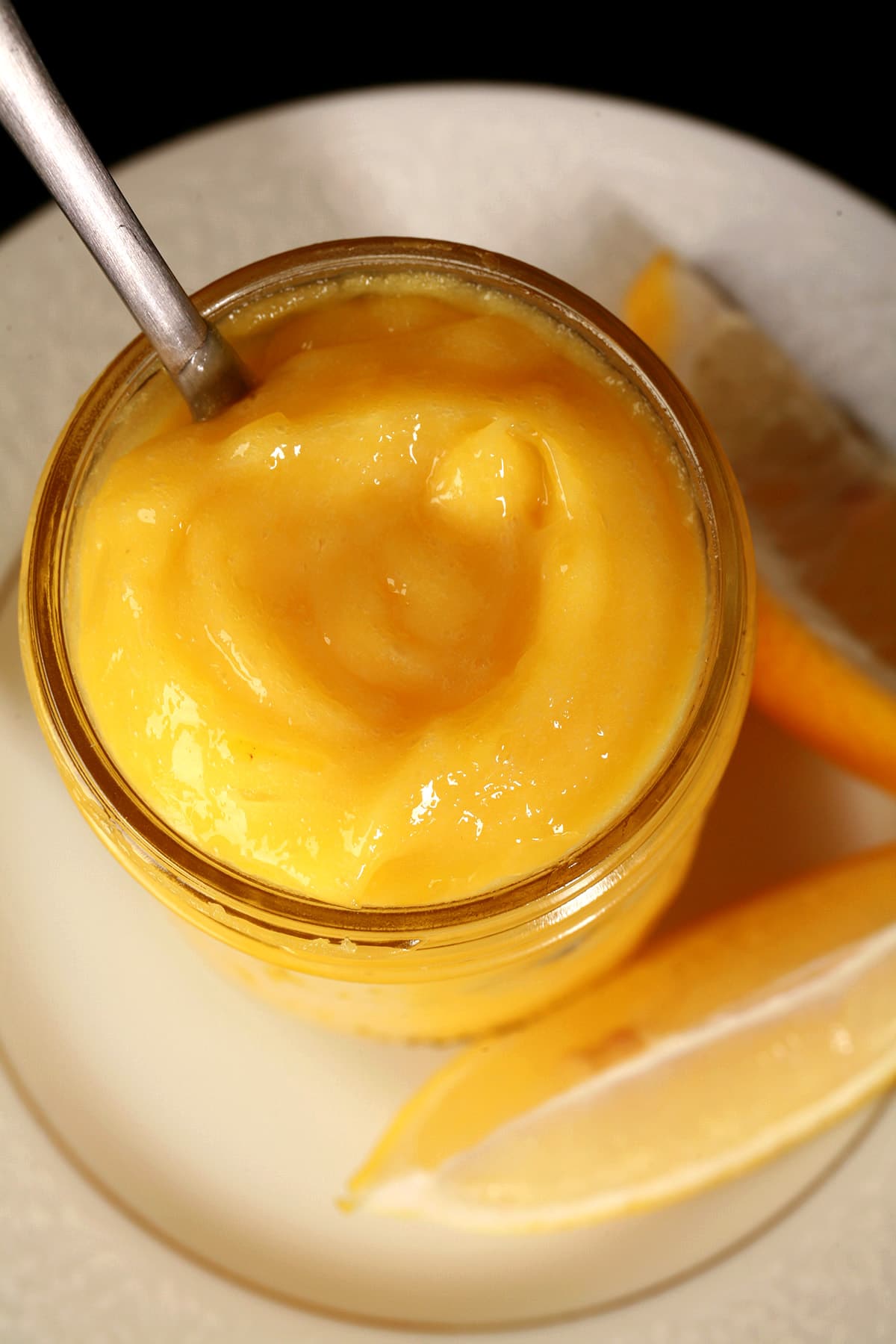
Tips for Making Lemon Curd
Lemon Curd Ingredients
The ingredients are super simple: Lemon juice/zest, sugar, eggs, and butter.
Be sure to use an actual lemon, not bottled lemon juice. It really does not turn out as well when using bottled!
Use basic white granulated sugar for the best taste.
Also, for the best shelf life, use nice fresh eggs.
Lemon Curd Equipment
You don’t need a ton of equipment to make curd, but each piece you do need is important. Here’s the rundown:
A Zester
First off, you want some way to get the zest off the lemon.
When I photographed this, I was using a little zesting plane that I’ve had forever, and it works well. No idea where I got it or what brand it is, though.
Since then, I treated myself to a Kitchenaid Box Grater, and I LOVE it.
If you’re in the place I was - with a 10+ year old basic metal grater that was caving in on itself, didn’t do a great (grate? LOL) job, and was literally being held together with an epoxy job*, seriously... treat yourself to a really good grater.
I had no idea what a difference it would make!
* Ok maybe even if yours isn’t being held together with an ugly epoxy job. Don’t let things get as bad as I did, before deciding it was time to replace. Life is too short!
A Juicer
Next, you need a good way to get the juice out, I prefer using small, citrus-specific juicers for this, rather than the big contraption we have for juicing everything else.
I have a Cuisinart Pulp Control Citrus Juicer, love it, no complaints at all.
There are also the Manual citrus juicers, or the Squeeze-type citrus juicers.
Go with whichever you prefer, just get the juice and avoid the seeds!
Mini Food Processor OR Fine Wire Strainer
You’ll want one or the other - more on that in a bit!
Heavy Bottomed Pot OR Double Boiler
Personally, I prefer using a heavy bottomed pot, but a double boiler is the traditional way to do this... more on that in a bit!
A Silicone Whisk
Yes, wire whisks are great in general... but they can react with the acid in your lemon curd, and make it taste metallic.
I like to avoid that whole thing, and just use a silicone whisk.
When making curd, I use the smallest whisk in my Set of 3 Silicone Whisks.
I just find that the smaller one is best to keep everything moving, and prevent clumps.
That said, any brand of silicone whisk should do just fine.
A Thermometer
For both proper thickening AND food safety reasons, I like to use a thermometer when making fruit curds.
You can use any thermometer that will accurate read a temperature of 165 F.
Personally, I like to use a Infrared Cooking Thermometer. It's quick, easy, and no-mess!

Cooking Technique
While you’re “supposed” to cook this over a double boiler - and I did in the photos - I’ll be honest... I never do.
I like to cook my lemon curd over low, direct heat. I whisk it constantly, and it’s ready in just minutes - so much less fussy.
If you’re not cooking it over higher heat and you keep an eye on it / keep whisking, you’re not going to end up with clumps.
I like to use a heavy bottomed pot, for the best heat distribution.
You’ll find that when you start out, there will be a lot of foaming. As you approach the right temperature, that foaming will subside - that’s when you should really start keeping an eye on the temperature, to avoid overcooking it.
Finally, just know that the curd will thicken more as it cools, so don’t be so worried if it’s not as thick as you’d like.
If you followed the recipe, did the spoon trick (more on that later), and your curd reached 165F, it’ll thicken!
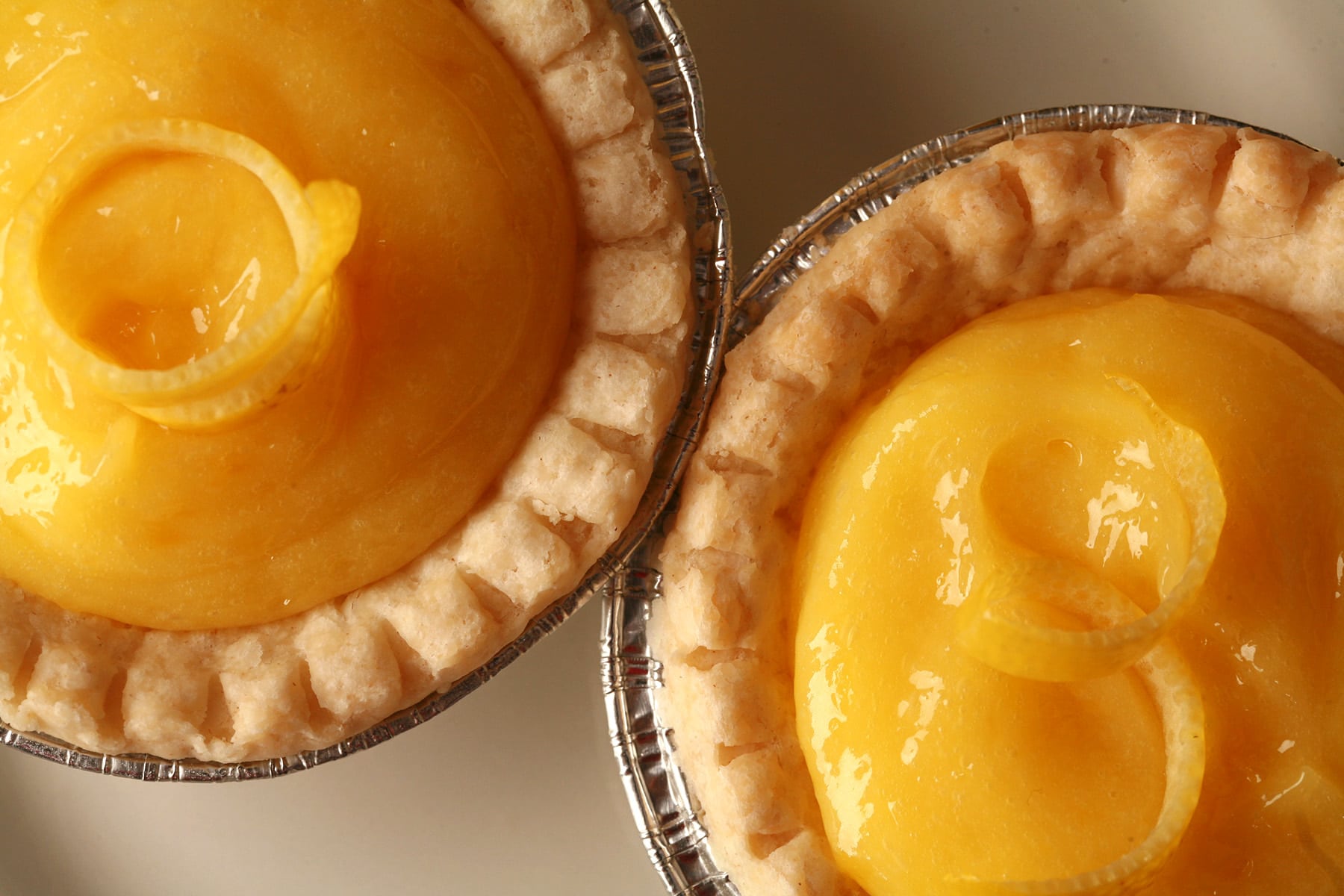
To Strain or Not to Strain
Traditionally, lemon zest is used in the cooking process, then strained out afterwards.
Personally, I prefer the method I demonstrate here, as well as in my posts for other citrus curds:
I run the zest through my Mini Food Processor, along with the sugar.
This breaks up the zest to bits that are so fine, they’re basically undetectable in the curd.
Not only is this less fussy, I find it tastes better.
That said, you can always zest the lemon and not strain at all - the curd just won’t be quite as smooth. Sometimes this is a fun option - I think it’s got some ~ character ~!
Or, if you want smooth and traditional, just press your cooked curd through a Fine Mesh Wire Strainer, before adding the butter.
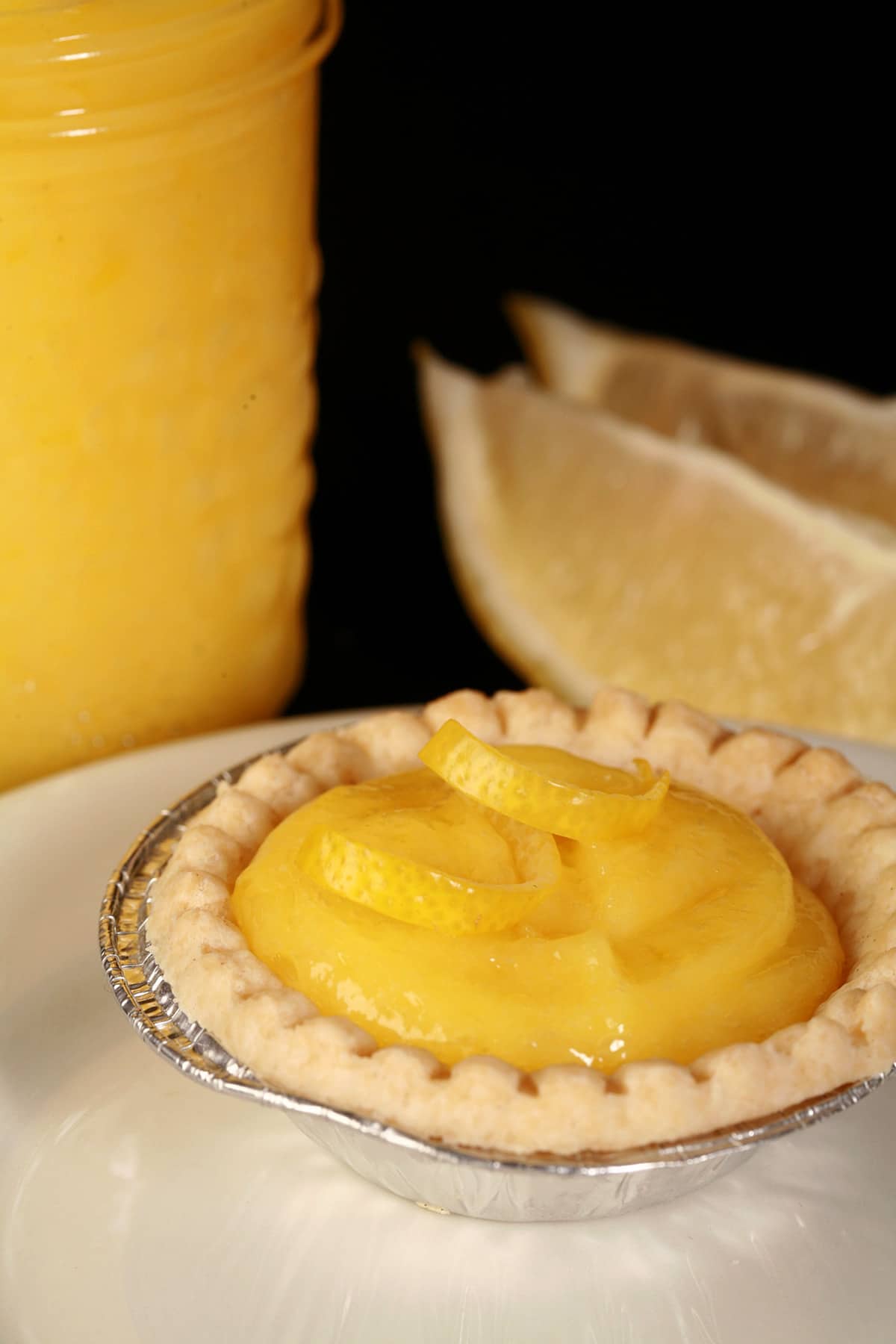
How Long Does Lemon Curd Last?
Depending on who you ask, homemade lemon curd will last up to a month or two in the fridge. (ALWAYS refrigerate your curd!)
Personally, I find it’s best to use it up within 2 weeks, for the best flavour.
Can I Freeze Lemon Curd?
Yes! It’ll keep for about 6 months in the freezer, and you can freeze it right in a canning jar.
Freeze your curd as fresh as possible - ie, don’t wait til it’s about to go bad.
When you want to use it, let it defrost in the fridge for a day or two before use.
Once the lemon curd is thawed, you’ll want to use it within a week or two.
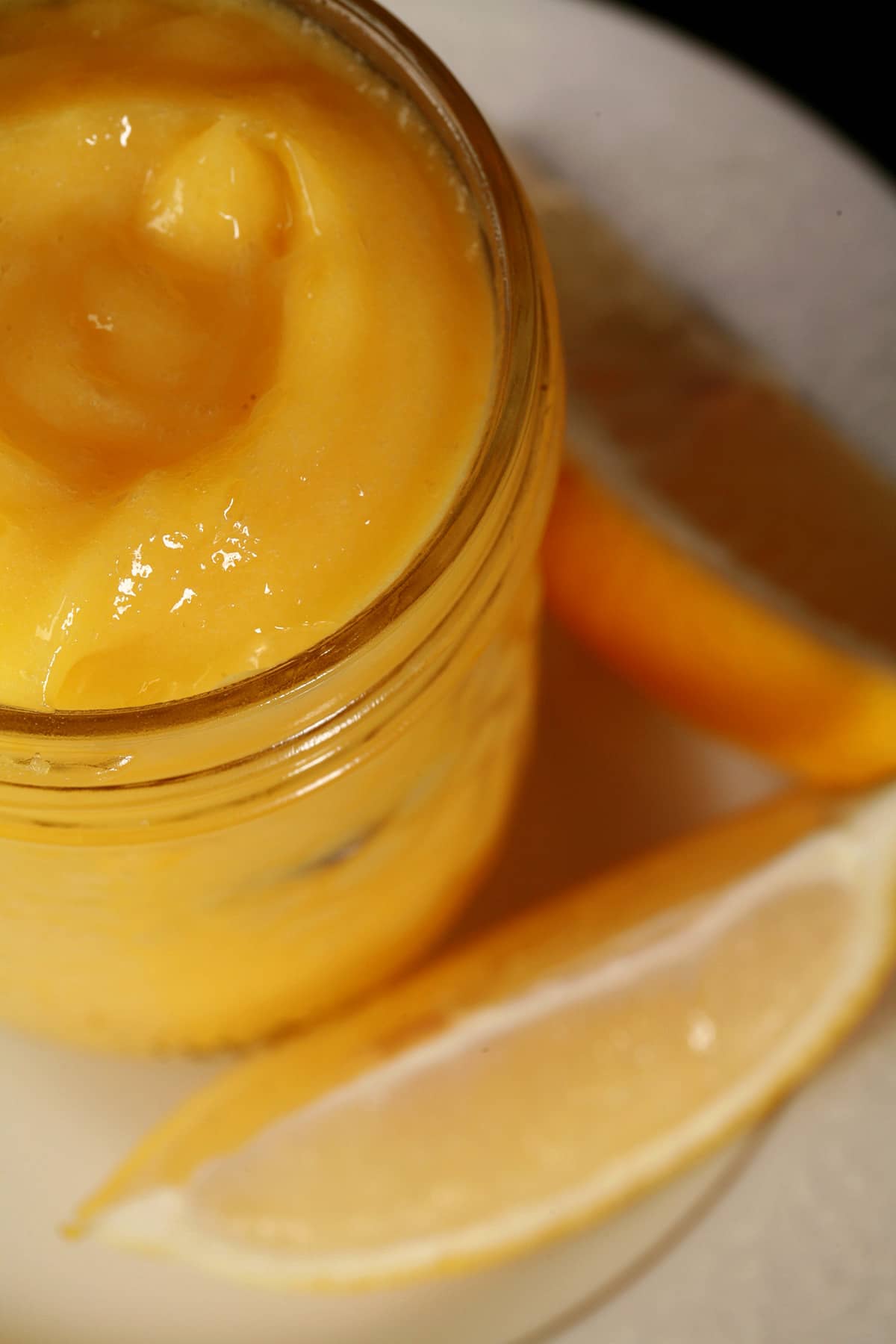
How to Make Lemon Curd
Full recipe follows, but here's a pictorial overview!
Zest the lemons.
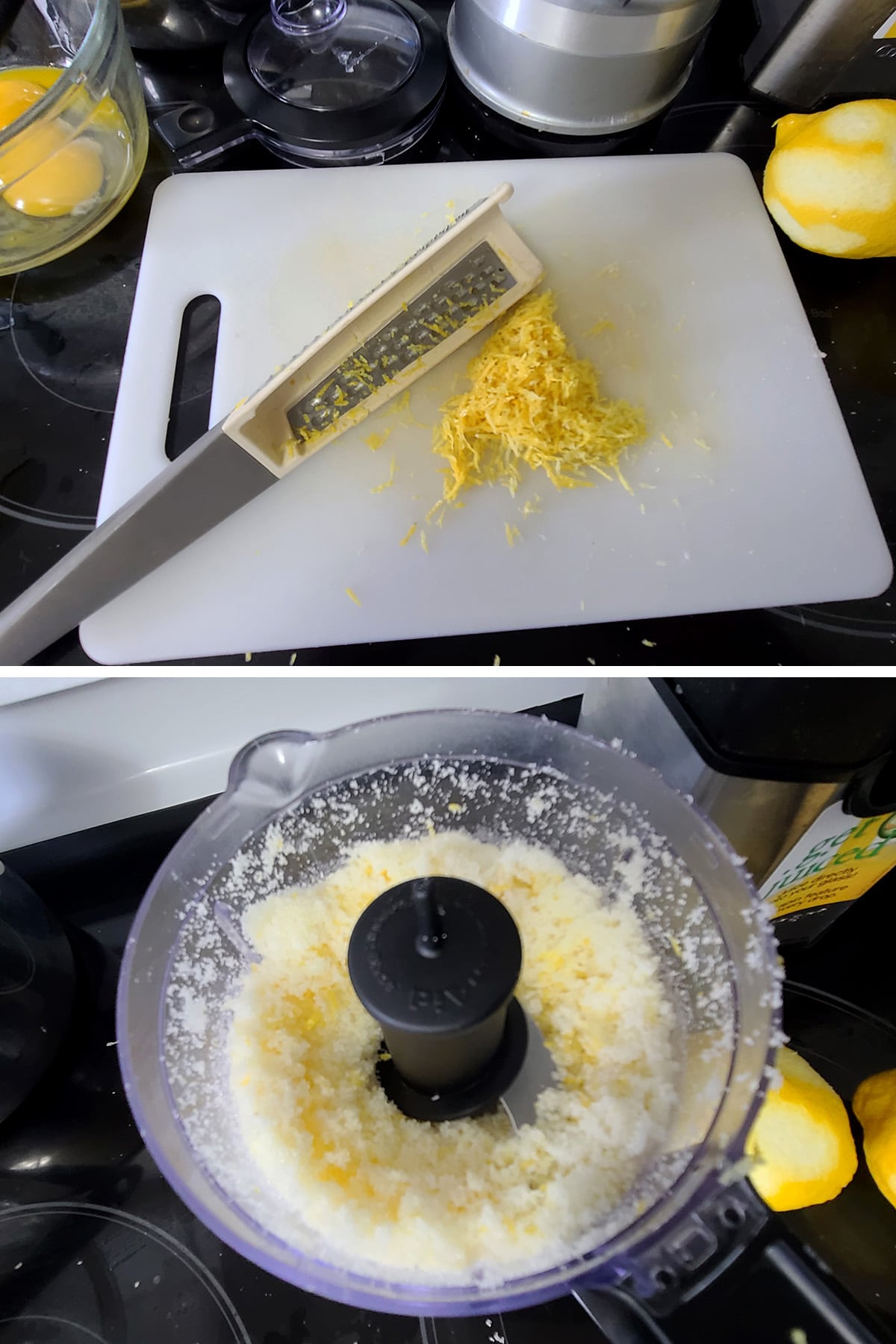
Add the zest and sugar to your mini food processor, blitz until zest is finely chopped and well incorporated in the sugar. Note: See post for details on skipping this step.
Juice your lemon(s), measuring out ⅓ cup of the juice.

In a small pot, whisk together egg yolks, large egg, and lemon sugar until well combined.
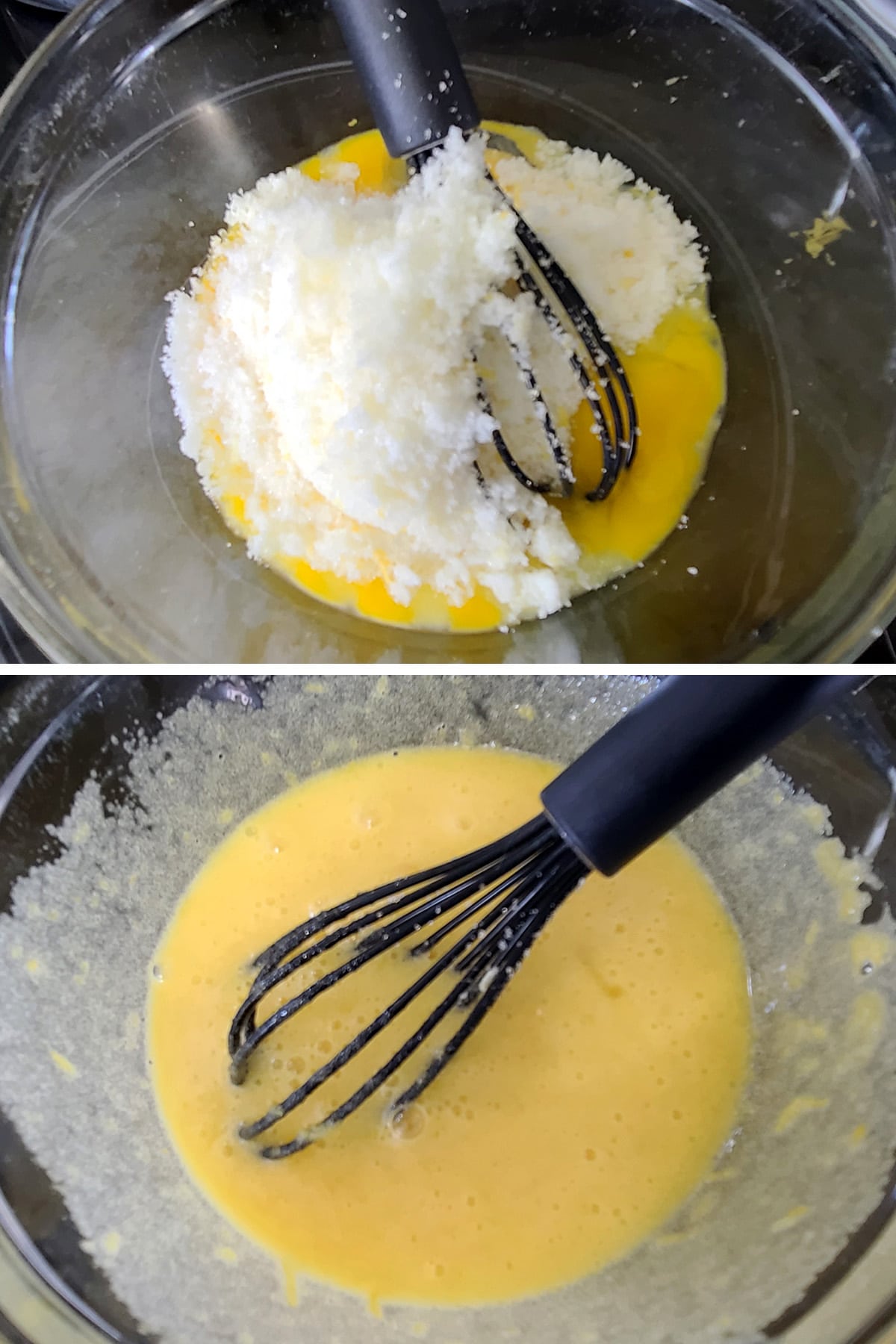
Add the ⅓ cup of juice, whisk until well combined.
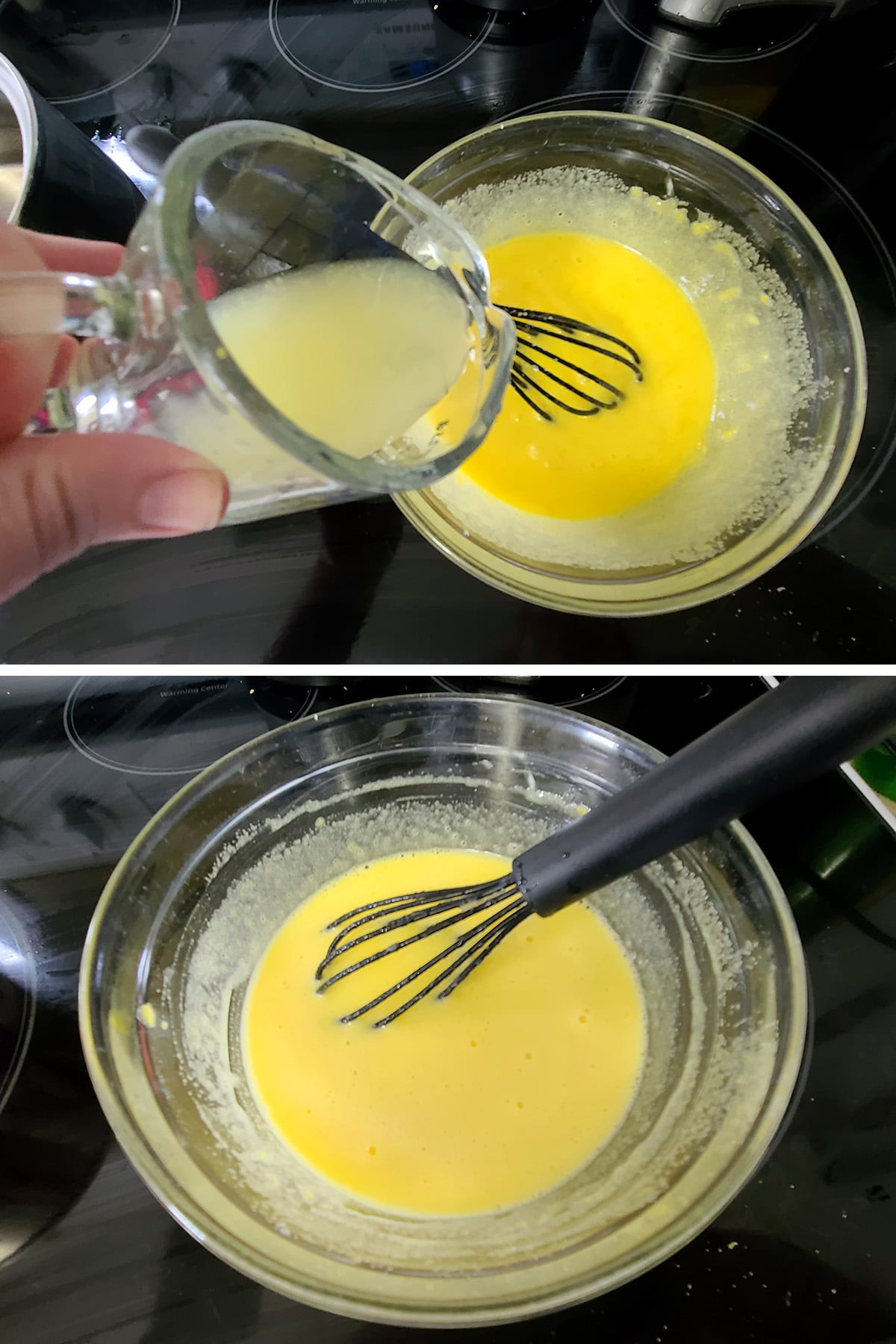
Cook over medium heat, whisking constantly, until mixture thickens.
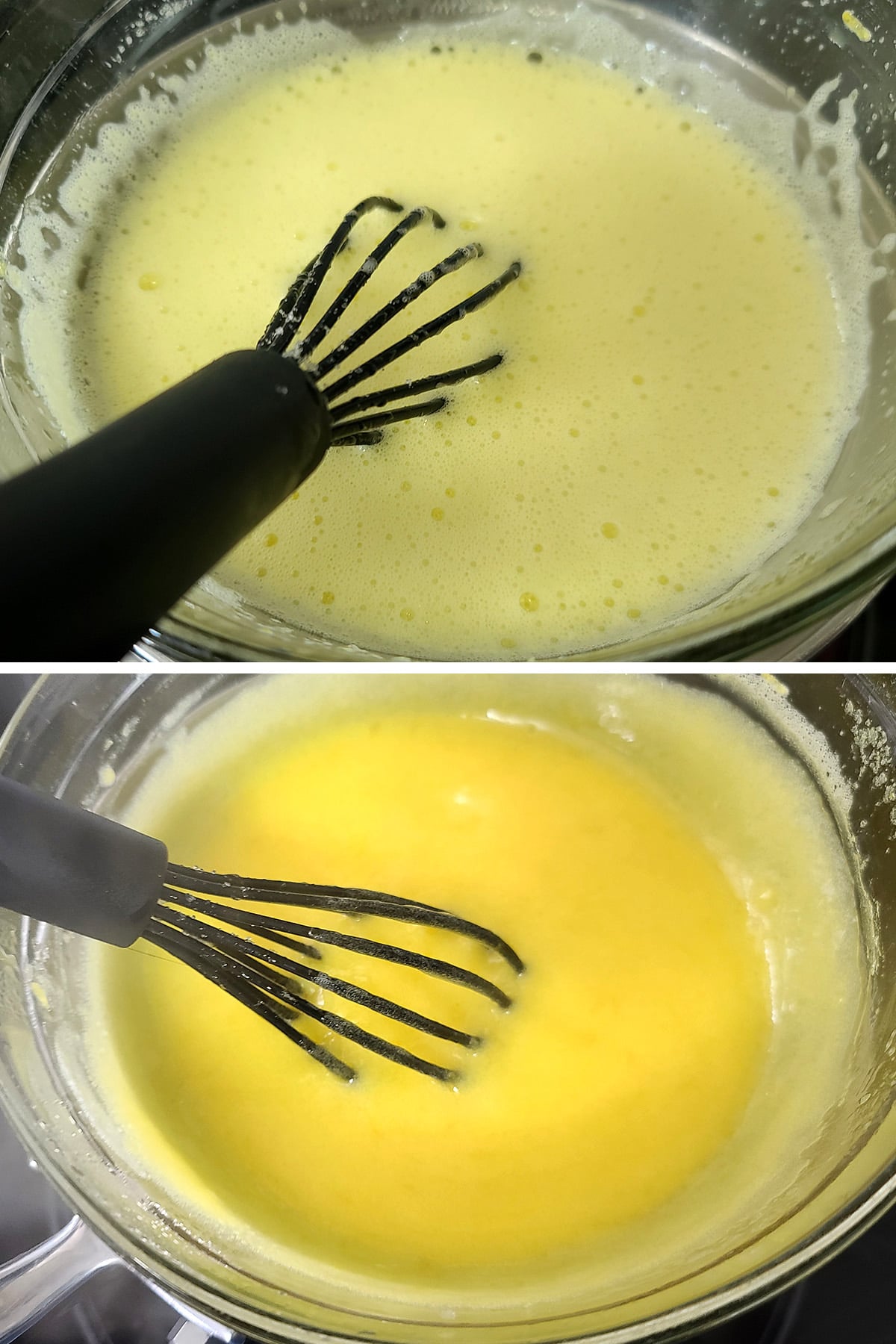
It should be able to coat the back of a spoon and retain a clear trail when a finger is dragged across the back of the spoon.
Ideally, you want the mixture to reach 165F - I use a surface thermometer for this.
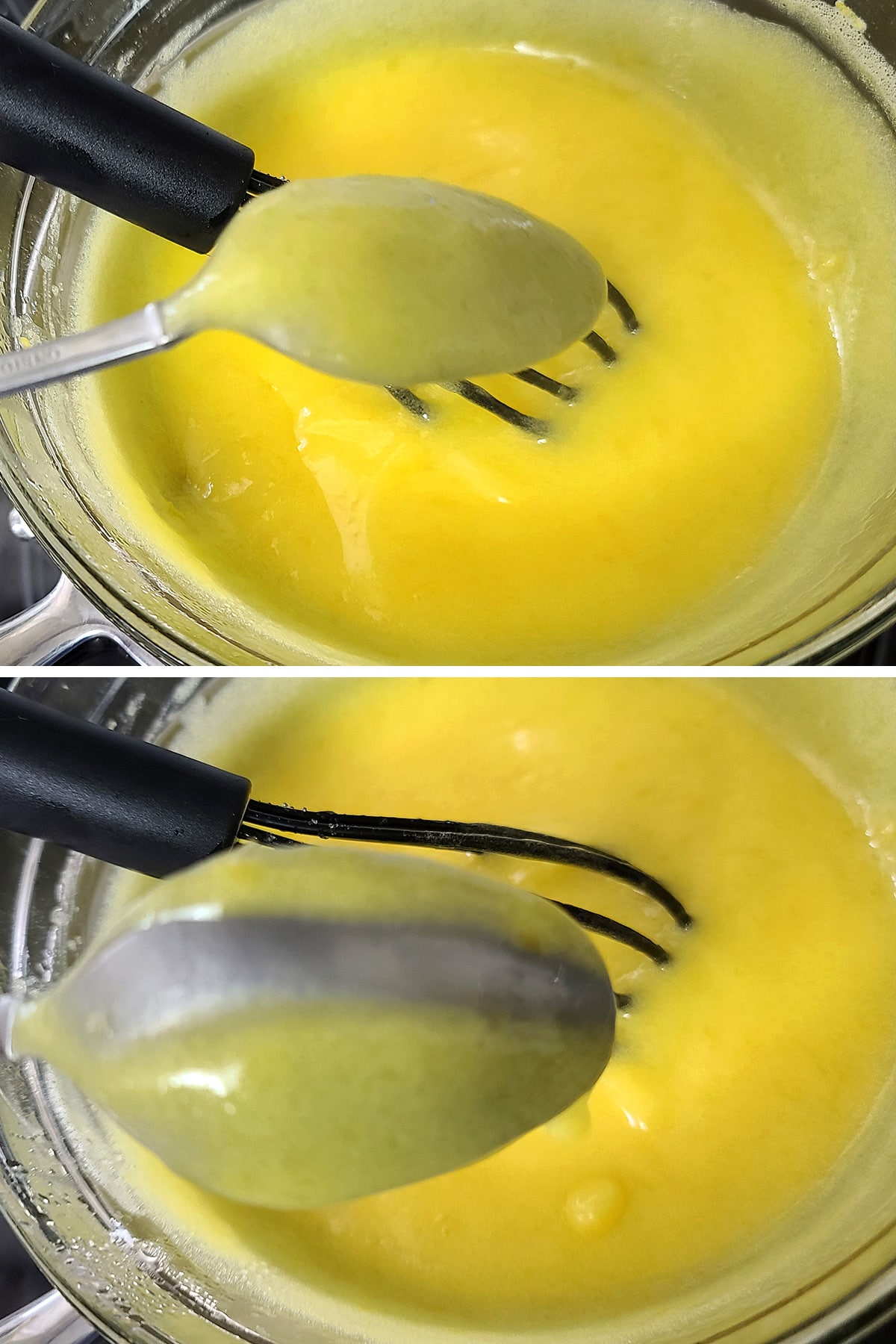
Once the mixture is thick/hot enough, transfer to a bowl. Add the pieces of butter, whisking until well incorporated.
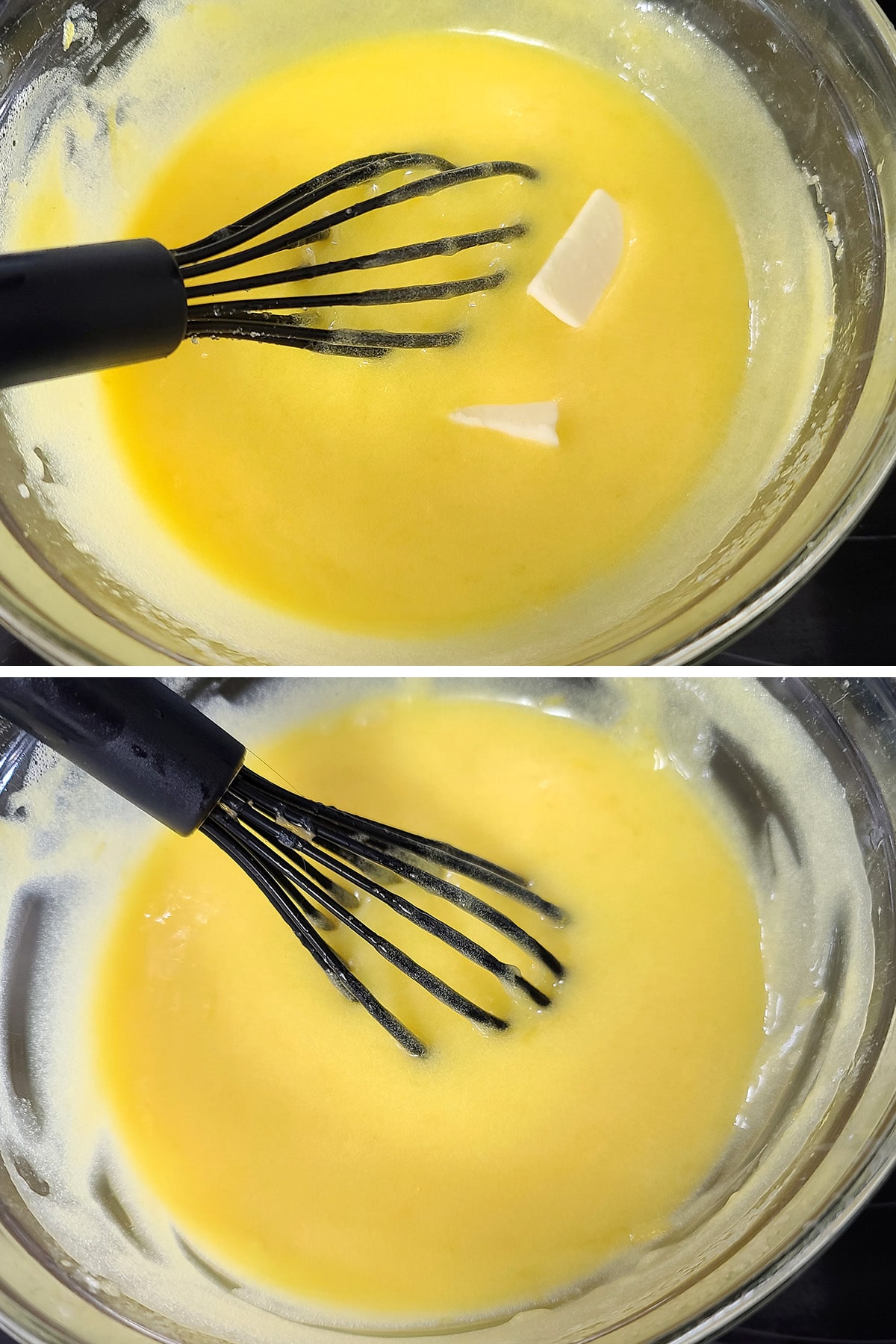
If you want to strain the curd, press it through a metal strainer at this point.
Once all of the butter has melted in and been fully incorporated into the curd, transfer to your storage container and chill for at least 1 hour before use.
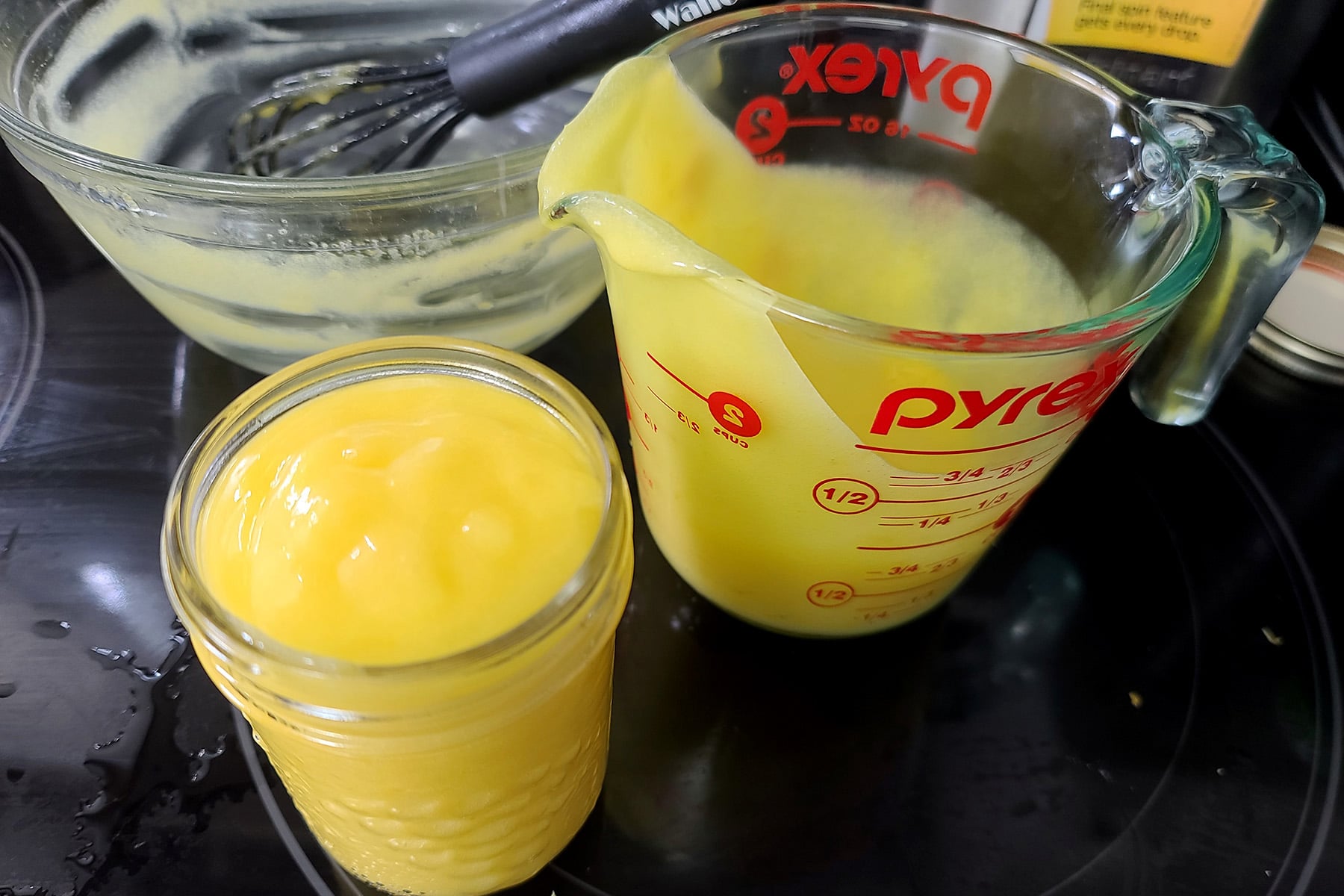

More Fruit Curd Recipes
Looking for more fun fruit curd recipes to dress up your breakfasts, brunches, or desserts? I've got you covered!
Blackcurrant Curd
Blueberry Curd
Cranberry Curd
Grape Curd
Grapefruit Curd
Keto Lemon Curd
Kiwi Curd
Lime Curd
Mango Curd
Orange Curd
Passionfruit Curd
Raspberry Curd

Share the Love!
Before you chow down, be sure to take some pics of your handiwork! If you post it to Bluesky, be sure to tag us - @CelebrationGen. We're also on Pinterest, so you can save all your favourite recipes to a board!
Also, be sure to subscribe to my free monthly email newsletter, so you never miss out on any of my nonsense.
Well, the published nonsense, anyway!
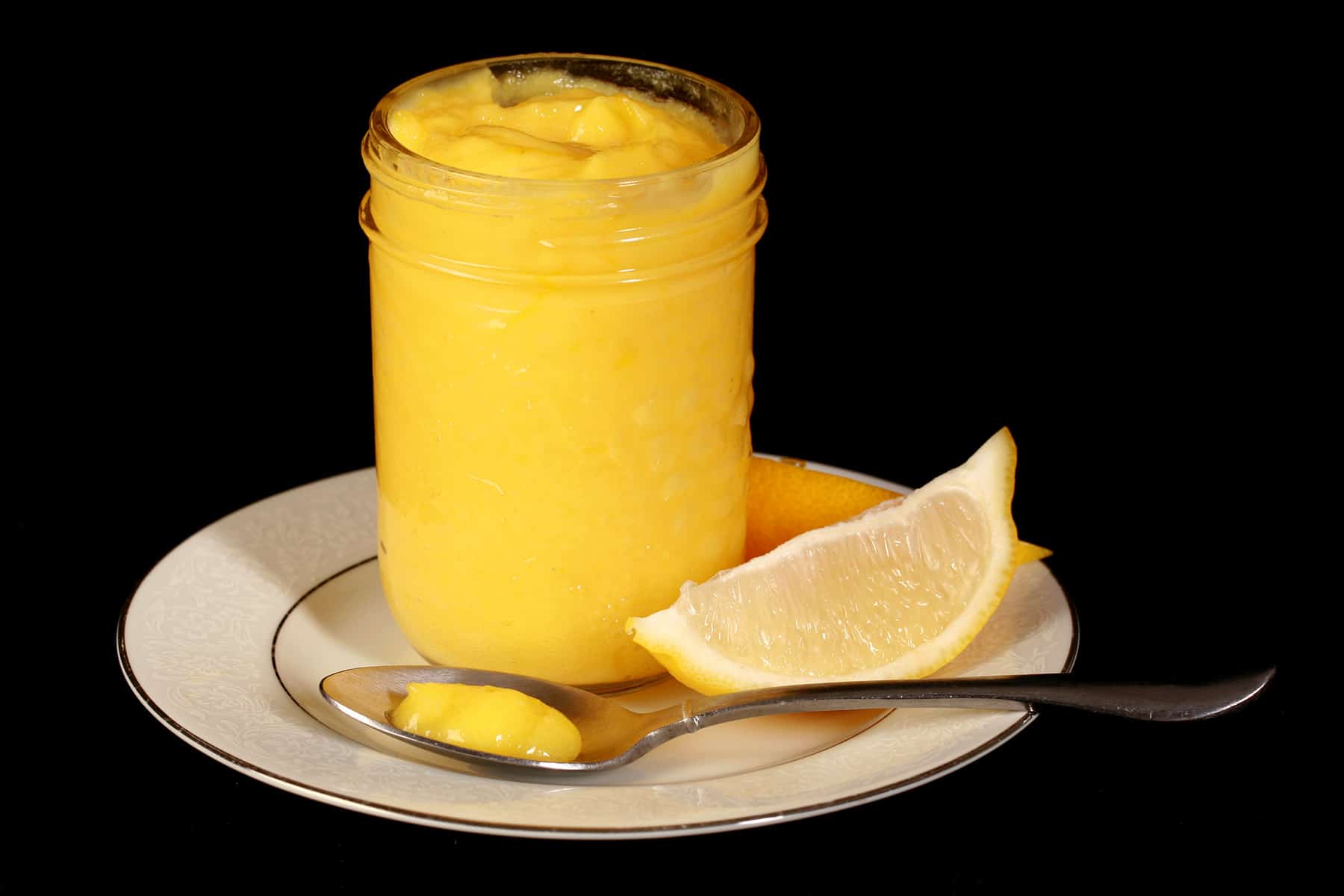
Lemon Curd
Equipment
- Zester
- Juicer
- Mini Food Processor
- Silicone Whisk
- Infrared Surface Thermometer
Ingredients
- 1-2 Lemons
- ¾ cup Granulated Sugar
- 3 Large Egg Yolks
- 1 Large Egg
- 6 tablespoon Salted Butter Chilled and cut into pieces.
Instructions
- Zest the lemons.
- Add the zest and sugar to your mini food processor, blitz until zest is finely chopped and well incorporated in the sugar. Note: See post for details on skipping this step.
- Juice your lemon(s), measuring out ⅓ cup of the juice.
- In a small pot, whisk together egg yolks, large egg, and lemon sugar until well combined. Add the ⅓ cup of juice, whisk until well combined.
- Cook over medium heat, whisking constantly, until mixture thickens. It should be able to coat the back of a spoon and retain a clear trail when a finger is dragged across the back of the spoon. Ideally, you want the mixture to reach 165F - I use a surface thermometer for this.
- Once mixture is thick / hot enough, transfer to a bowl. Add the pieces of butter, whisking until well incorporated.
- If you want to strain the curd, press it through a metal strainer at this point.
- Once all of the butter has melted in and been fully incorporated into the curd, transfer to your storage container and chill for at least 1 hour before use.


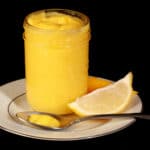




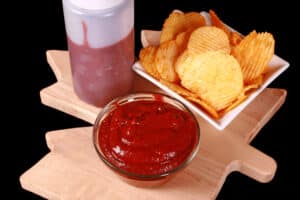

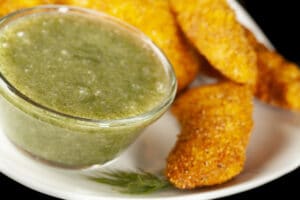

Chuck
I look forward to marking some curd thank you sounds amazing will let you no results Thank you
Tonya
This lemon curd was very easy, much faster than the previous recipes I’ve used and tastes delicious. Thank you for a great recipe!
Evelyn
Can you can fruit curd if you make a large batch.
Marie Porter
Apparently, but I've never tried - I am NOT the one to ask about non-pickling canning, sorry about that!